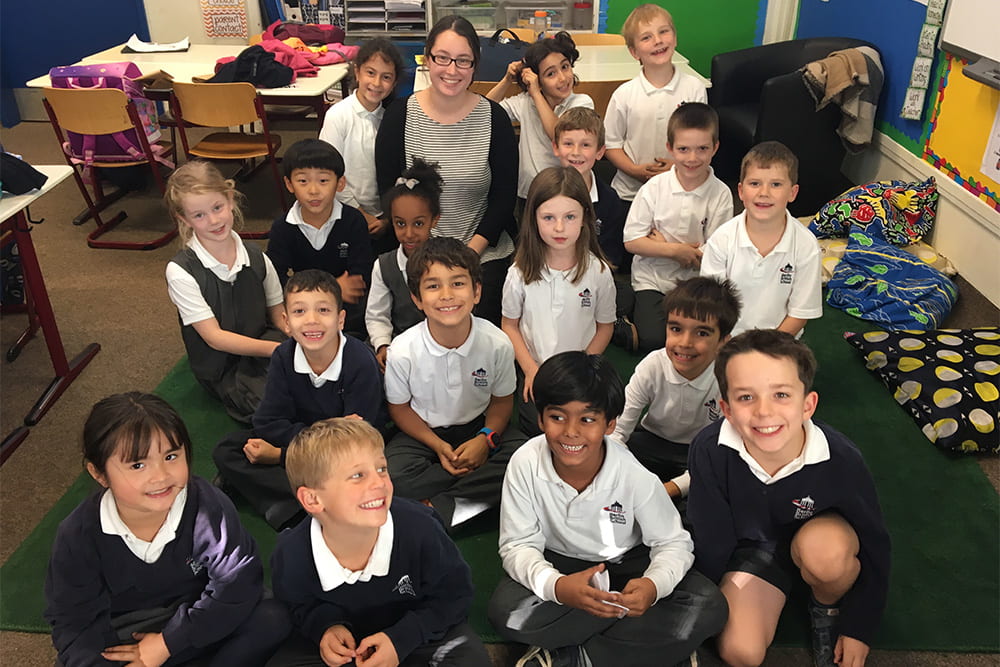When the grade point average is met and the coursework is complete, there is one last step an Education major needs to take before earning a teaching license: practical teaching experience. Some might choose to stay around Northeast Wisconsin. Some return to their hometowns. But UW-Green Bay’s Professional Program in Education encourages its students to reach further and student teach internationally. Program leaders believe students who immerse themselves into other cultures are much more culturally competent and comfortable, an important attribute for new teachers stepping into classrooms that are constantly diversifying.
It’s not always the most direct path for Education majors.
“Our program is tied to the Wisconsin DPI (Department of Public Instruction) requirements,” says Jamie Froh-Tyrrell, advisor and student teaching coordinator for Education at UW-Green Bay. “Because our students are busy fulfilling the state requirements through coursework, they don’t get the opportunity to study abroad like other students. Student teaching abroad offers them the opportunity to gain international experience for the very first time, as well as fulfill their state student teaching requirement.”
Getting there from here
UW-Green Bay students interested in student teaching internationally can follow one of two tracks. The first is to Cuernavaca, Mexico, via a January-term travel class, where they spend three weeks immersing themselves in the culture and then can return to complete nine or 18 weeks of student teaching there. The second option is through a partnership with the Office of International Education and the Educators Abroad program, which offers students the opportunity to student teach in more than 70 countries. Students can choose 10- or 18-week placements. They simply need to express where they want to teach and the partners work together to make it happen.
In either track, there is no need to know a second language. According to Froh-Tyrrell, “In most areas, English is the second language…so students can get by just fine.” “However,” she continues, “host families usually don’t speak English, so students are immersed in the native language from the moment they get there. Often times they come back fluent — an unexpected perk that can make a difference when applying for teaching roles back in the states.”
Bringing the experience of diversity home
Education students who teach internationally bring back much more than a fluency in a second language. They return with cultural stories and experiences to share, and that makes an impact personally and professionally – in their own lives and others’ lives.

Froh-Tyrrell explains, “Green Bay has historically been, and still mostly is, a monocultural, homogenous community. When students bring back stories and experiences they’ve had with global diversity, it helps close the culture gap. They bring back a message of understanding.” Froh-Tyrrell continues, “Plus, they’ve been immersed in a culture where they are the different ones, so they can now have true empathy for, and a connection with, someone who may be from a different culture in their classroom.”
Brooke Soto ’18, who student taught in Berlin, Germany, agrees. “I have gained such a humbling respect for different cultures, and I look forward to modeling that respect for my students.” And with 14 different languages spoken at her school in Berlin, she also had to learn to communicate without words. “Different cultures not only speak differently, but express emotion differently,” she says. “That is something I’ve become keenly aware of, too.”
In fall 2017, six UW-Green Bay student teachers went abroad: Four to Cuernavaca, Mexico; one to Jamaica; and another to Germany. Riley Garbe ’17, who went to Cuernavaca, has a job waiting for him upon his return from abroad: as a Spanish teacher. “Spanish is my second language. I studied it in high school and got real-world experience in college when I worked with Latino immigrant families in Green Bay.” The English major (with an Education minor) wanted to student teach in Mexico, not just to practice his Spanish, but experience Mexican life. “I wanted to immerse myself in a totally different environment and be part of authentic Mexican culture,” Garbe says. The Mexican holiday, “Day of the Dead” provided such an experience. He joined his host family members as they walked to various houses and churches to pay respect to dead loved ones. “There were thousands and thousands of other people from the village, all visiting the homes of people they don’t even know to express their love, respect and solidarity with their fellow Mexican people,” Garbe said.
For Soto, connecting with German culture meant connecting with its storied history. “To place your fingers into the bullet holes that still remain in some of the buildings, to walk the streets soldiers marched and fought on…nothing can replace being there and experiencing that. It’s extremely impactful, profoundly moving,” she says.
International student teaching definitely makes an impact on a resume. Andrew Mullroy, Principal at St. John the Baptist School, GRACE, in Howard, Wis (and Riley Garbe’s new employer) says that international experience speaks volumes. “It shows they are willing to adapt and adjust; that they are learners and willing to seek out opportunities; that they strive for understanding.” Mullroy adds, “There is a huge difference between learning the culture and living the culture.” Students who student teach in a foreign country, with a foreign language, with a foreign culture, come back as different people… prepared to step into a classroom, teach diverse students and connect with them in meaningful, personal ways. They also come back excited to share their newfound understanding and respect for others. They are, in a sense, beacons for unity.
“It’s been life changing,” says Soto.
–Story by Kim Viduski ’92


